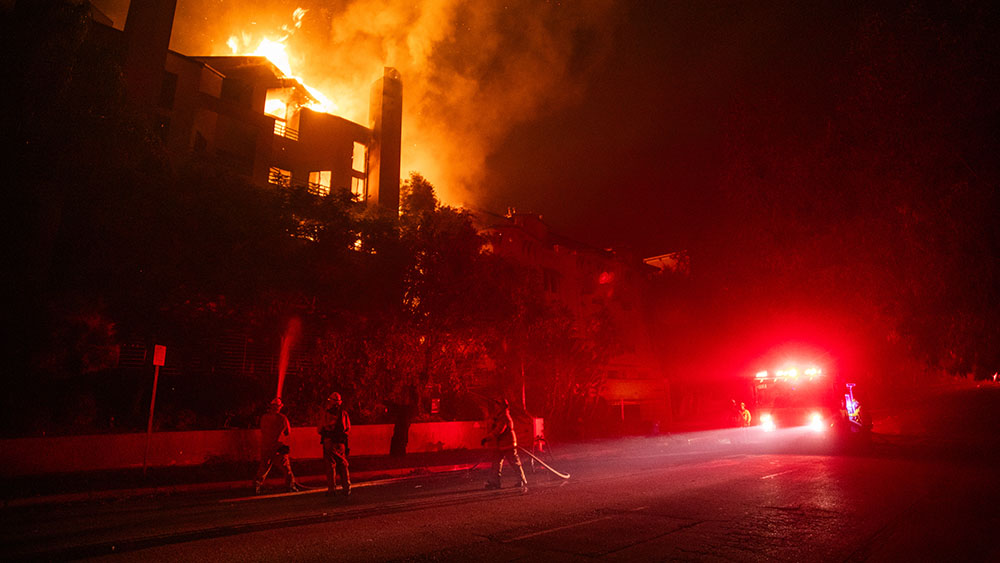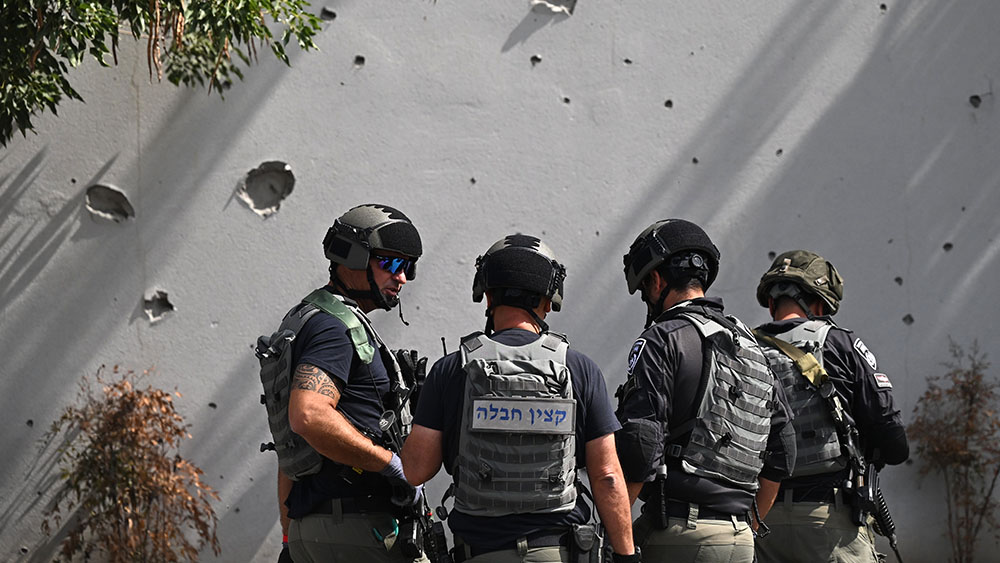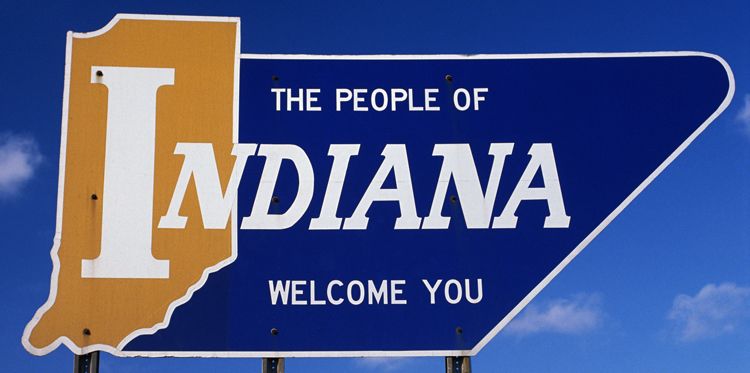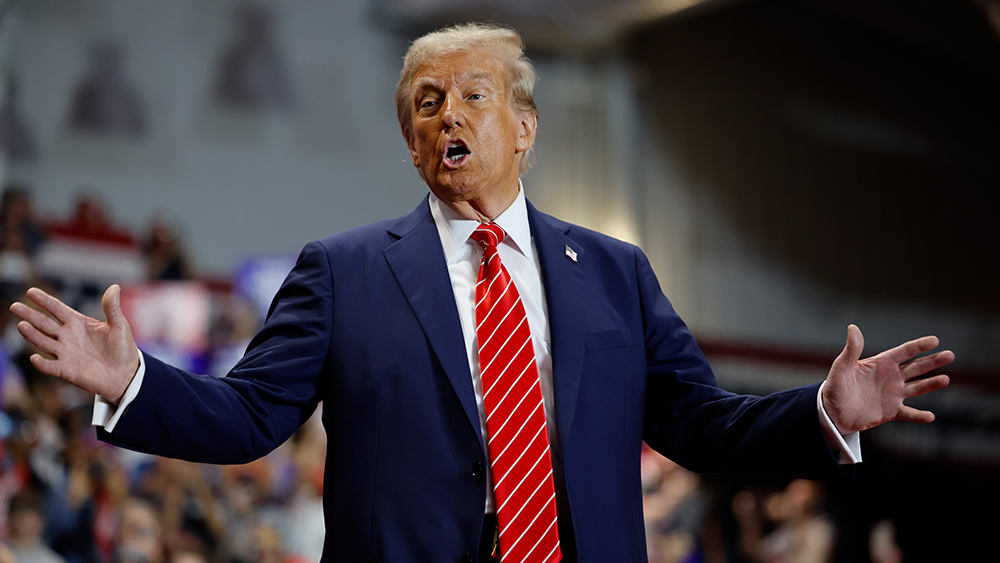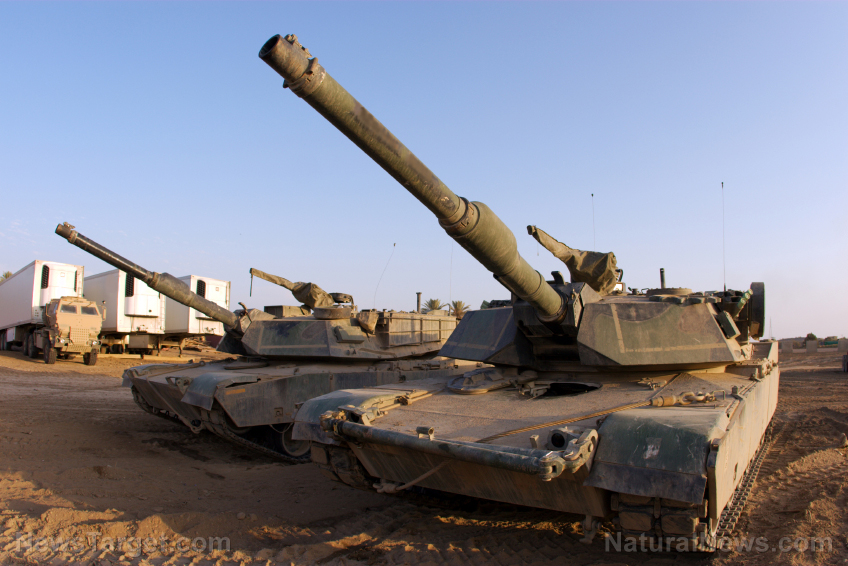 Parler
Parler Gab
Gab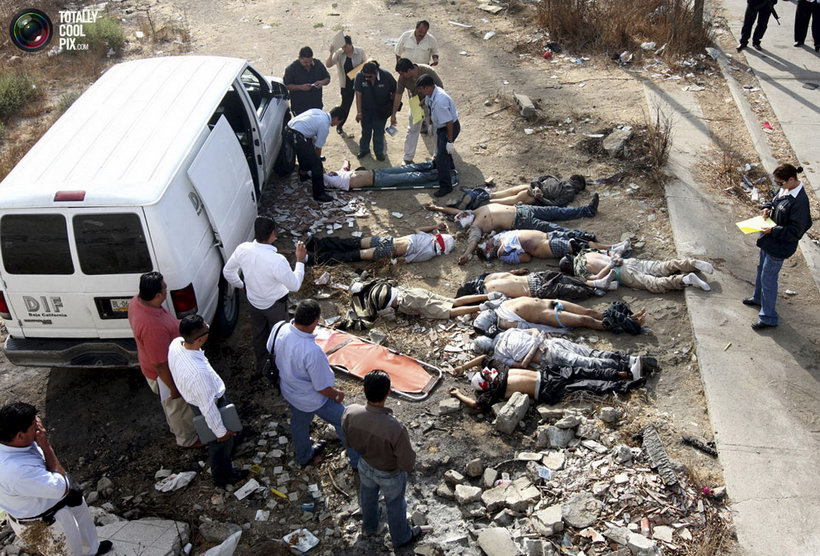
- The U.S. military is stealthily going to war with the drug cartels at the Southern U.S. border.
- A US Air Force RC-135V/W Rivet Joint spy plane conducted two high-stakes signals intelligence (SIGINT) missions along the US-Mexico border this week.
- The flights focused on gathering intelligence on drug cartels in Mexico’s narco-heavy states of Chihuahua and Baja California.
- US Border Czar Tom Homan has warned of potential confrontation between the US military and cartels, while President Trump has labeled cartels as "foreign terrorist organizations."
- The missions come amid heightened military presence along the border and speculation about potential direct action against cartel operations.
US spy plane conducts sensitive SIGINT missions along the southern border
US Air Force flight tracking data reveals that an RC-135V/W Rivet Joint signals intelligence aircraft conducted two strategic surveillance missions along the US-Mexico border this week. The first mission, on Friday, focused on the border region near El Paso, Texas, and the Big Bend Ranch State Park in west Texas. The second mission, on Monday, shifted southward, targeting areas in Baja California, a hot spot for the Tijuana and Sinaloa cartels. The RC-135V/W, a highly advanced aircraft designed to intercept and analyze enemy communications and electronic signals, flew a figure-8 pattern over sensitive regions, suggesting a focus on gathering intelligence on narco-trafficking routes and cartel operations. According to open-source intelligence (OSINT) accounts, the plane operated within Mexican airspace over the Gulf of California, marking an unprecedented level of direct engagement in the region. “This may be part of the new US-Mexico (Trump-Sheinbaum) cooperation against the drug cartels,” former USAF lieutenant colonel Rick Francona noted on social media. The missions align with recent remarks by Border Czar Tom Homan, who told ABC News that he “expects” a hot confrontation between the US military and cartels in the near future.A watershed moment in the drug war
Drug cartels in Mexico, particularly in regions like Chihuahua and Baja California, have long dominated the lucrative narcotics trade, controlling key trafficking routes into the United States. The Sinaloa and Juárez cartels, in particular, have been locked in violent conflict over these routes, which also serve as pathways for illegal migrants. The recent US military buildup along the border reflects a broader strategy to disrupt and dismantle these organizations. In March, President Trump designated Mexican cartels as "foreign terrorist organizations," a move that expands the legal framework for targeting them. When asked about the potential deployment of US special forces to Mexico, Trump hinted at the possibility, saying, “Could happen” and adding, “Stranger things have happened.” The RC-135V/W’s SIGINT missions represent a significant escalation in the US government’s approach to combating drug cartels. While the exact intelligence gathered remains classified, the flights likely gathered valuable insights into cartel communications, logistics, and leadership structures. “This could be a game-changer,” said one anonymous national security analyst. “By targeting cartel operations so precisely from the air, the US military could disrupt their ability to operate effectively.” However, the analyst noted that such operations carry significant risks. “If the cartels feel their networks are under threat, they might retaliate—either in Mexico or across the border.” The spy plane’s missions are a stark reminder of the escalating tensions between the US and Mexican drug cartels. As the Trump administration doubles down on its strategy to secure the border and disrupt narco-trafficking networks, the potential for direct confrontation looms large. For now, the RC-135V/W’s flights are a silent but potent symbol of US resolve. Like a storm gathering over the borderlands, the operations hint at a coming tempest—one that could reshuffle the power dynamics of organized crime in both Mexico and the United States. Sources include: Zerohedge.com Zerohedge.com Enoch, Brighteon.aiIsrael uses Palestinian territories to test its surveillance and population control technologies
By Arsenio Toledo // Share
Indiana proposes absorbing 33 Illinois counties fed up with Chicago’s liberal policies
By Cassie B. // Share
Trump unveils reciprocal tariffs to level trade playing field, targets VAT systems
By Cassie B. // Share
Europe, Zelensky frustrated as U.S. excludes them from Russia-Ukraine peace talks
By Cassie B. // Share
Governments continue to obscure COVID-19 vaccine data amid rising concerns over excess deaths
By patricklewis // Share
Tech giant Microsoft backs EXTINCTION with its support of carbon capture programs
By ramontomeydw // Share
Germany to resume arms exports to Israel despite repeated ceasefire violations
By isabelle // Share

